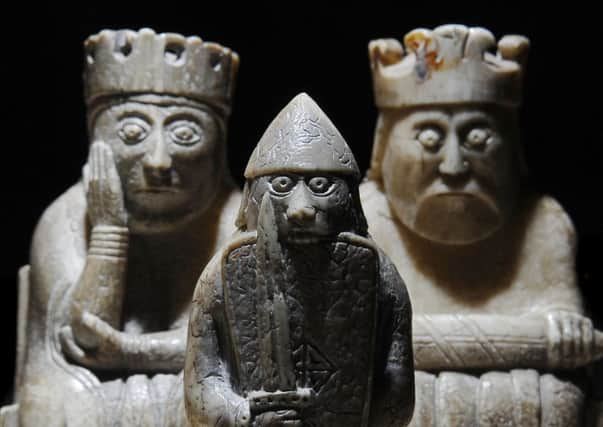Brian Ferguson: National treasures should benefit the whole country


Both are home to two of Scotland’s most important archaeological discoveries - which were made nearly two centuries apart, but have both been at the heart of intense debate and intrigue in recent years
It is widely recorded that crofter Malcolm MacLeod discovered the 12th century treasure trove of “Lewis Chessmen” in a small stone kist in a sand dune in 1831.
Advertisement
Hide AdAdvertisement
Hide AdBut the mystery of how the 93 pieces, believed to have been made in Norway, ended up in the Western Isles has never been resolved, despite various theories that they were stolen from a passing ship, hidden by a travelling merchant or lost while being transported to Ireland.
It is a decade since controversy flared over the rightful home of the chessmen, split up after the Scottish Antiquaries Society in Edinburgh was unable to raise the funding to acquire them from Captain Roderick Ryrie, who had brought them down from Stornoway.
Although 11 would go on to be donated to the society, the rest were sold to the British Museum in London, which was urged by then new First Minister Alex Salmond to send them to the National Museum of Scotland in Edinburgh.
The campaign to “repatriate” the 82 London-based chessmen prompted much posturing on either side of the border, with the chessmen cast as pawns in a political game. The case also prompted difficult questions about the precedents for other treasures acquired by museums on the open market.
A compromise deal agreed two years later led to 30 of the chessmen being sent on a 16-month tour of Scotland. And last year six of the London-based chessmen went on long-term loan to a new museum at Lews Castle in Stornoway, 20 miles from where they were discovered.
There is a certain amount of irony that the NMS, which the SNP wanted to benefit from its chessmen campaign, has been cast in the role of the Galloway Hoard villain. And a decade on from its chessmen crusade, the Scottish Government has been forced to act as peacemaker.
It is nearly three years since Derek McLennan discovered more than 100 gold, silver and jewelled Viking-age treasures on church land near Kirkcudbright.
It was not until earlier this year that a campaign began to put the hoard, hailed as the richest collection of rare and unique Viking-age objects ever found in Britain, on display in a new art gallery in Kirkcudbright.
Advertisement
Hide AdAdvertisement
Hide AdBut hopes of preventing the Galloway Hoard being “whisked away” to Edinburgh were dashed last week after an independent panel ruled that the museum was the best home for its long-term display. As the nation’s most popular attraction, there seems little doubt the Galloway Hoard will be seen by many more people in Edinburgh when it goes on display there. NMS is also much better placed to raise the £1.98m finger’s reward, rather than the local authority.
But it is also vital that NMS remains true to its pledge that parts of the hoard will be able to go on display in Kirkcudbright in future.
It is difficult to have much sympathy with the campaigners’ claims that the hoard will now be “lost” amongst thousands of other artefacts in Edinburgh. But it is only right that, as with the chessmen, some form of reasonable compromise is reached to allow the benefits of these remarkable treasures to be felt across Scotland.